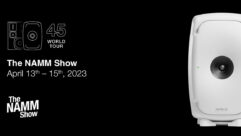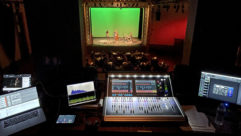

Surviving an Installation
Dec 26, 2014 5:49 PM, By Jonathan Brawn, CTS, DSCE, DSDE, DSNE, DCME
Digital Signage Troubleshooting
As Digital Signage Expo (DSE) 2015 approaches, it makes me wonder why it seems like as soon as a major tradeshow like DSE ends, it immediately appears to loom on the calendar again. That must be because some of us are constantly working with show management on classes that will be conducted during the event.
This year, I wanted to offer a seminar that would not only be useful but also benefit attendees’ businesses—and then it hit me. Everyone focuses on the business and technology aspects of digital signage. Let’s plan out what the objectives of the system will be, figure out the financing and budget, and develop a content strategy. These are all truly critical aspects of any digital signage network, regardless of scale. Then everyone turns to the technology, looking at the software, then the media players, then on to displays and mounts, and this matches what we teach in the Digital Signage Experts Group and the “7 Key Elements of Digital Signage.” So it would be hypocritical of me not to stress these important issues. However, as I was trying to come up with a useful and appropriate course idea, I realized that so much of what we do focuses on everything up to the installation. What happens as its being installed? The act of physically installing the system into the space where it is intended to reside is truly important, and it’s easy to marginalize it. We have to perform a proper site survey, evaluate the wall/ceiling structures we are mounting to, make sure we have the right mount, and then actually perform the installation. Was the display installed plumb and level? Are all the cables tied up neat and tidy? Was the media player mounted out of the way? Does everything look professional? Does it all power on? What happens when the system is fired up and it doesn’t work out of the box? What do we do then? It dawned on me that this is a truly overlooked topic, and I set out to develop a seminar to share amassed wisdom on what to do when the blasted thing won’t work right for you. Here is a preview.
When we discuss troubleshooting for digital signage, it may initially seem quite overwhelming. Since there are so many components, there are a ton of variables that can impact how a system works. My personal approach is, at least in my perspective, methodical in nature. It may not be the fastest process out there, but I prefer to be thorough, and spend a little more time ruling out everything I can, so that later on I’m not spinning my wheels. I’ll share with you my favorite tip, which I learned over years working with IT technologies. First, never assume anything. Always start checking from even the most painfully obvious of details. It may save you an enormous amount of time in the field (Which should translate into cost savings and profitability, should it not?). The proverbial IT support person joke of “Is it plugged in?” should not be beneath you. I don’t care how many years of experience you have. If the system is not responding right, begin at one side, and slowly work your way across, checking each physical point of connection. For instance, start with the server itself (if not using a SaaS based platform) and make sure it has power, and the network cable is firmly seated. Look at the media player next. Is it plugged in? Powered on? Are the network and video cables firmly connected? Are they in the right ports? Then the display. Is it plugged in, powered on, and on the right input? Is the video cable connected correctly? I can hear everyone’s indignant response that you couldn’t have possibly made that mistake. Even the most skilled and experienced technical person can make a mistake, and the more capable and skilled one is, the more we tend to automatically assume the problem, and thus what the solution will be. Medical students learn an adage as they develop diagnostic skills, “When you hear hoof beats, don’t think zebras, think horses,” and I must say, the same is true in IT. Double-check everything obvious, simple, and physical before you move on to software troubleshooting.
Now, I’m going to make an assumption of my own. After checking all the physical connections, it’s still not working, is it? Take a look at the client software and the media player. We need to verify it has an IP address, and that it can see the network properly. It’s all too common that a network or software firewall is blocking important traffic, or errant antivirus software is not allowing our rather intentional traffic through. This is where we move into the wild and wooly world of the network, and it can be very difficult to deal with. I don’t want to scare anyone off; it’s quite doable, but you may need support from onsite IT staff if you haven’t built the entire network yourself. We need to check communications across the entire traffic path, each step of the way.
I’m going to share one of my other very important troubleshooting tips, which I use nearly every day. If the media player’s client software simply can’t see the server, let’s eliminate the network entirely. To which I can clearly hear the question, “How in the world do I do that?” Well, it’s actually pretty simple. The server exists somewhere, right? Let’s take a media player and a desktop monitor and get as close to it as we can get. A couple Ethernet cables and a small switch can be invaluable here. Simply plug the media player and server in to the same switch and then try it. If they work, you have pinpointed the problem being somewhere else in the chain of communication. If they don’t work, then you have something else wrong. See what I mean about eliminating as many variables as possible? Also, this should illustrate what I mean about possibly needing support from onsite IT staff. They may need to help you track down what is blocking traffic. Of course, with SaaS systems being so popular, you might ask how to get at the server there. Which is of course to say that you physically can’t. However, what you can do is connect a media player directly to a modem, with no router, no firewall, and nothing in between. Is this bad for security? Sure! Is it how you will be running it once it’s installed? No, of course not, but it does allow us to again eliminate the network as much as possible.
As you can hopefully see, this is a complex and important topic, but one that can definitely be approached if you are clear, calm, and yes, methodical in your work. Sometimes it’s tempting to scream in frustration when things don’t work the way you think they should, firing up right out of the box. As one of my clients told me recently, “It’s 2014 for pity’s sake! It should just work!” Of course, I agree, but the reality is that our lives are now full of very complex technologies that appear simple, and sad to say, rarely is it going to just “work.” It will often take a little finesse, and yes, troubleshooting to ensure the digital signage system is fully operational, so don’t lose heart. Stick with it, and your customers will be happy, and your business will be able to continue to grow.
Jonathan Brawn is a principal of Brawn Consulting, an audiovisual consulting, educational development, and marketing firm based in Vista, Calif. Brawn Consulting has a national footprint with connection to the major manufacturers and integrators in the commercial audiovisual industry.
SEMINAR
ADVANCED DISPLAY TECHNOLOGIES
Author Jonathan Brawn will be presenting Seminar 7 entitled, “Advanced Display Technologies,” at Digital Signage Expo 2015 on Wednesday, March 11, 9:00-10:00 a.m. at the Las Vegas Convention Center. For more information about DSE or to register for this or any other educational seminar or workshop and learn about digital signage go to www.dse2015.com










